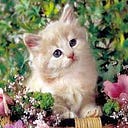Discovering the Endearing Personality of Pug
Pug, with their distinctive wrinkled face and charming personality, have captivated the hearts of dog lovers all over the world. These small-sized canines are known for their playful nature, loving demeanour, and expressive eyes. If you’re considering bringing a pug into your family, it’s important to understand their behaviour and temperament to ensure a harmonious relationship.
Understanding the Pug’s History and Origins
To truly appreciate the pug’s behaviour and temperament, it helps to delve into their history. Pug have a long lineage that dates back thousands of years, originating in ancient China. They were highly valued companions of Chinese royalty and were often seen in the imperial court. Pugs eventually made their way to Europe, where they gained popularity among the nobility during the 16th century.
Physical Characteristics and Their Influence on Behavior
Pugs possess distinct physical characteristics that make them visually appealing and impact their behaviour. Their compact size, flat face, and expressive eyes contribute to their adorable appearance but also affect their temperament. The shortened muzzle and pushed-in face make pugs prone to certain health issues, such as breathing difficulties and eye problems. Pug owners need to be aware of these potential health concerns and take appropriate measures to ensure their well-being.
Personality Traits of Pugs
Pug are renowned for their amiable and sociable nature. Here are some key personality traits that define the pug breed:
- Playfulness: Pugs have a youthful and playful spirit, often engaging in antics that can bring laughter to their owners. They enjoy playtime, both with their human companions and other pets.
- Affectionate: Pugs are known to be affectionate and thrive on human companionship. They form strong bonds with their owners and crave attention and affection. Pugs make excellent family pets due to their loving nature.
- Sociability: Pugs are generally friendly and enjoy being around people and other animals. They tend to get along well with children and can adapt to various social environments.
- Stubbornness: While pugs are generally eager to please, they can sometimes display a stubborn streak. This can make training a pug challenging. Consistency, positive reinforcement, and patience are crucial when training a pug.
Understanding Pug Dog Behavior
Pug behaviour can vary from one individual to another, but certain tendencies are commonly observed within the breed. Let’s explore some key behaviours associated with pugs:
- Attention-seeking: Pugs love being the centre of attention and will often go to great lengths to get noticed. They may follow their owners around the house, paw at their legs, or jump on furniture to seek attention. Giving them ample social interaction and mental stimulation can help curb attention-seeking behaviours.
- Snoring and snorting: Pugs often snore and snort due to their shortened muzzle, which is considered a normal characteristic. However, a veterinarian should monitor and evaluate excessive snoring or breathing difficulties.
- Food obsession: Pugs are renowned for their love of food and can sometimes become obsessed with it. This can lead to overeating and weight gain, further exacerbating their health issues. A balanced diet and portion control are crucial for maintaining a healthy weight in pugs.
- Separation anxiety: Pugs are known to form strong bonds with their owners and can experience separation anxiety when left alone for extended periods. Proper training, gradually increasing alone time, and providing stimulating toys can help alleviate this issue.
Tips for Nurturing a Happy Pug
To ensure a fulfilling and content life for your pug, consider the following tips:
- Regular exercise: Despite their small size, pugs benefit from regular exercise to maintain their physical and mental well-being. Daily walks and interactive playtime are essential to prevent obesity and stimulate their curious minds.
- Grooming routine: Pugs have a short, double coat that requires regular grooming to keep them healthy and free of mats. Brushing their coat, cleaning their facial wrinkles, and regularly checking their eyes and ears are all part of a pug’s grooming routine.
- Positive reinforcement training: Pugs respond well to positive reinforcement training methods, such as rewards, praise, and treats. Consistency, patience, and a gentle approach are key when training a pug.
- Regular vet check-ups: Pugs are more susceptible to certain health conditions due to their specific anatomy. Regular veterinarian visits can help identify potential issues early on and ensure your pug receives the necessary care and treatment.
Conclusion
With their lovable personality and endearing traits, Pug make wonderful companions for individuals and families alike. By understanding their behaviour and temperament, we can provide them with the care and environment they need to thrive. Remember, every pug is unique, and while they share common characteristics, their individual personalities should also be taken into account. You can enjoy a fulfilling and enriching relationship with your pug companion by embracing their playful spirit and affectionate nature and taking the necessary steps to address their specific needs.
Must Read: Red Whiskered Bulbul
